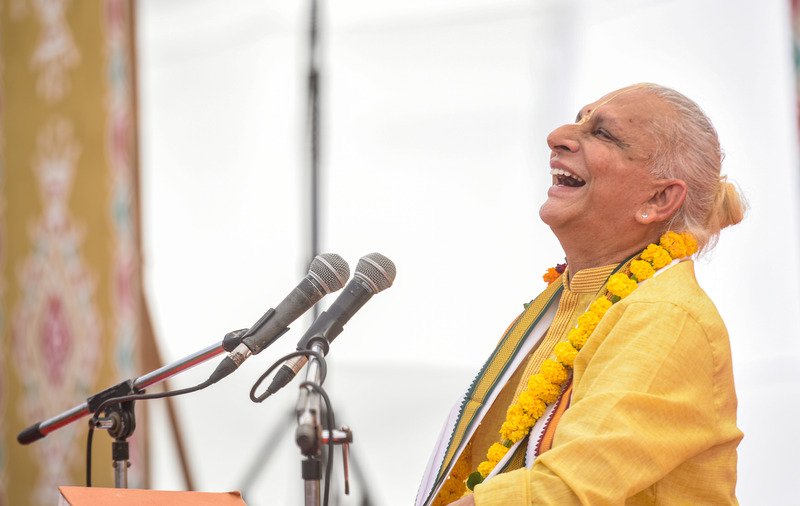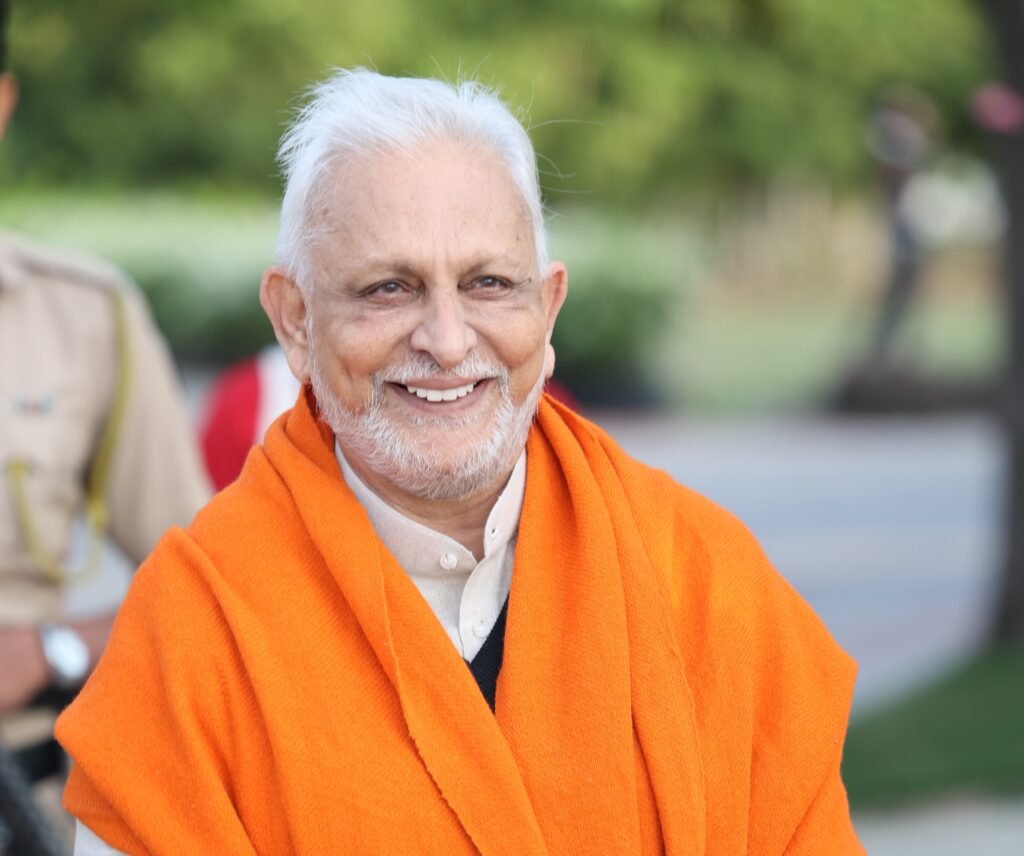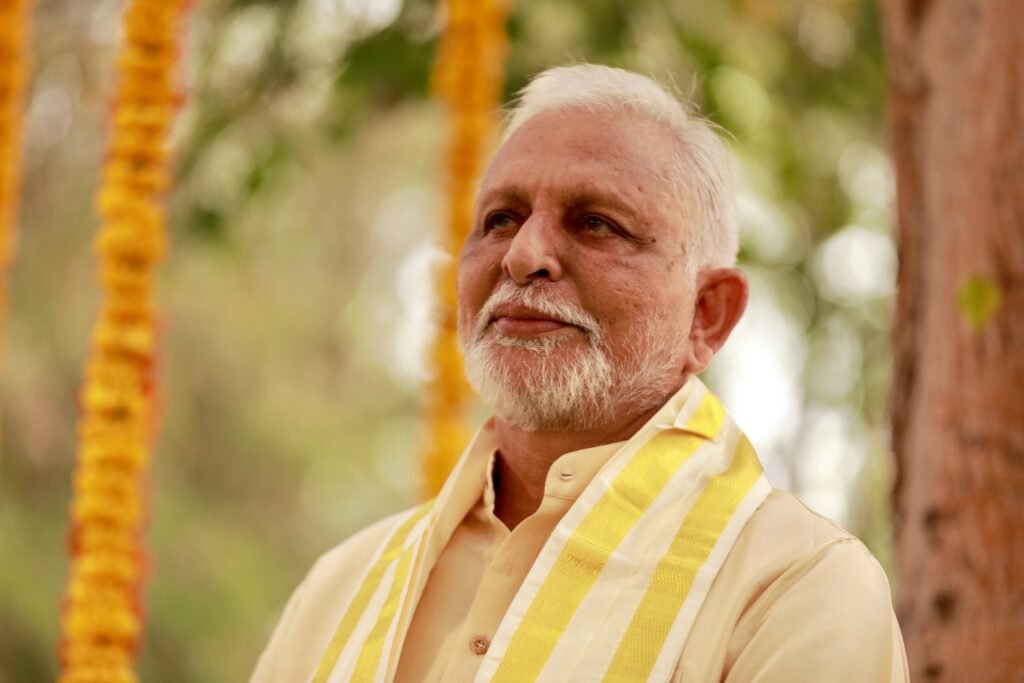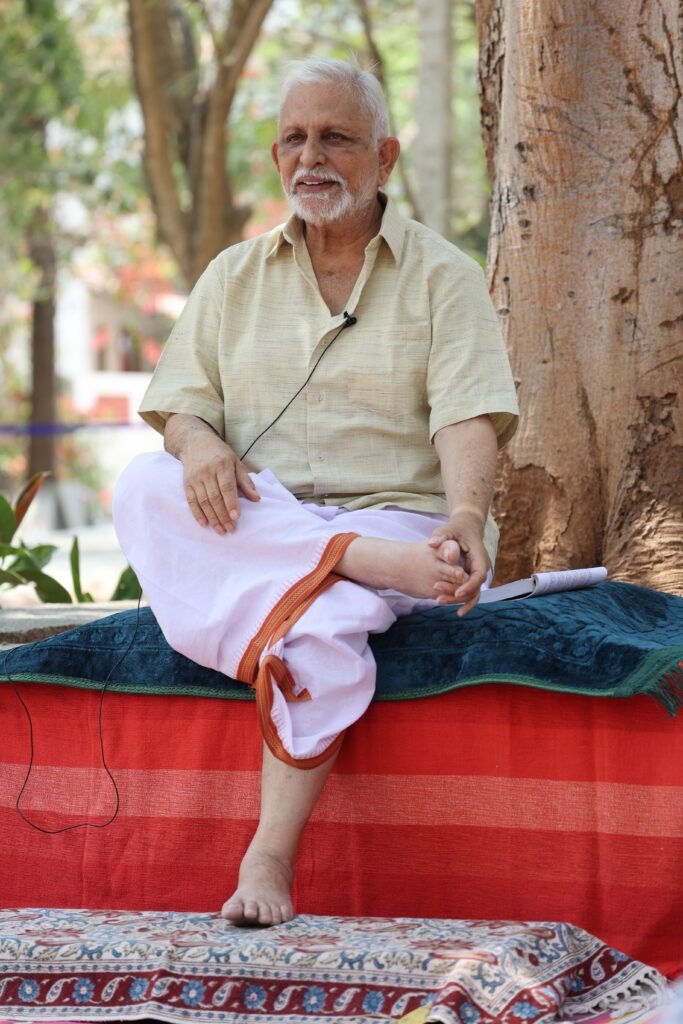
This has been the subject of discussion for thousands of years among mankind, especially by the great spiritual teachers who have existed, cutting across all barriers in different communities and countries. In India, when others were working on improving themselves technologically, economically, scientifically, there was a group of people in this country who were more into investigating into the mind and the inner workings of the human psyche. Therefore, it’s quite natural that we have a big body of literature regarding the search of who we actually are, where we have come from, where we are going and what is the aim of life.
So let us start from the beginning.
Is there anybody on this earth who is not looking for some kind of happiness?
This urge for happiness is built into our system. It’s not something that comes from outside.
The little child is happy with a lollipop. A grown-up person thinks maybe if I find a girl I will be happy. I am single, maybe if I find somebody and get married, then I will be happy?
Then we think If I have a child, then my happiness will improve because I am expanding myself. There is another unit which is enjoying. So together it will become many units and then we will all enjoy it, this is what we do. Then what happens, the children grow up, they get married, they go on their way, whatever they have to do they just disappear and then we are again left. The fact is when we are born, we are born alone. Nobody is coming with us. When we die, we die alone, nobody will be there with us.
In this little drama between life and death, we think we can find happiness by doing this and that, we keep moving. In fact this movement of life, motion, constant movement, is the search for happiness in some way or the other. Sometimes by finding a job, sometimes politicians think by becoming politicians, businessmen think by becoming the best, but the best never happens because we are always searching. If it could be best then it would have stopped, but it doesn’t stop.
Therefore the Upanishad said this whole of life is in motion, constant movement, and that is why it is called Jagat, because the word Jagatyaam means that which is constantly moving. Jagat Yam Jagat. Is there anything that does not move?
As far as time is concerned, it is constantly moving, nobody can control it. My guru Maheshwarnath Babaji used to tell me, when you eat food, remember that time is eating you. Time and tide waits for no man.
What about the mind?
Constantly moving, from the time we are conscious, it’s moving. Till the time we die, we think it is stopping, it doesn’t.
Is there somewhere in this movement where there is silence, there is a quietness, is there a centre which does not move?
īśā vāsyamidaṁ sarvaṁ yatkiñca jagatyāṁ jagat
That means this Supreme Being or Reality, you may call it Isha, Brahman, you can even call it Shunya or Poorna, if you like. that which cannot be defined by our ordinary senses, which is the root and essence of everything.
From the psychological mind, the individual human being point of view, Shunya is that when everything subsides.
The constant chattering that starts with birth and continues till death and even after that comes to an end while still living. If this ends, then there is Shunya. You can call it Poorna if you like. It is to look for this that we do all kinds of things in this world – to find this. Another word for Shunya of course is Nirvana. Nirvana means the clearing of the mind of all negative tendencies, of all agitating thoughts, of all distractions, Patanjali called Chitta Vritti Nirodha, completely removing all the vrittis from the chitta. This is called Nirvana. Then what happens? Then there is an emptiness inside into which reality awakens itself. Reality is always with us, inside us.
And it is in search of this that we go around this world looking here and there, looking here, finding, not being able to find it.
This looking for more, goes on and on because we forget the fact that the completeness which is Poorna, you can call it Shunya if you like, I like to call it Purna. That which we are looking for is inside us and not outside. If you find it inside then you will find it outside, you cannot find it outside. So therefore the great weaver saint Kabir Das, who lived in Banaras and earned his living by weaving cloth. He said, the human being’s search for happiness is like the musk deer looking for the fragrance. it searches for it all over the forest, pushing its snout under thorny bushes, bleeding, but not knowing that the kasturi is coming, the fragrance is coming from its own belly.
The treasure that you seek is within you, and you seek it outside. It is because we know that a treasure exists that we are seeking. It is built in our system. There is happiness, there is completeness, we have to look for it. But where do we look for it? Wherever you look it is still incomplete. So we need to turn around and look at ourselves. Now this turning around and looking at yourself is called the Nivritti Marga, as opposed to Pravritti Marga, which is looking outside for happiness. But the wonderful thing is, both these things can go side by side. Nobody can complete all their lives looking only inside.
It cannot happen, because there is no place where you can remain undistracted and find this inner self. Wherever you go and sit in a cave, you are still carrying your mind, which is the chattering. Cause of mischief is the mind. If you go to solitude, you cannot leave the mind anywhere and go, it is with you.
And then, if you go and sit in solitude in a cave and meditate for 20 years, how do you know that if you have actually improved? What is the sign?
If I meditate in a cave, Babaji used to say, you are meditating 30 years, 12 hours every day inside a cave, at the end of it you say, now I am purified, I am free of everything. How do you know? Can you? Do you still have anger? Can you get angry with the cave?
There is nobody to get angry with. Are you jealous of the cave once? Nothing there. So how do you know that you are really? It’s only when you come out of the cave, into this world, and get into the bus, and somebody kicks you on the leg, then you know where you stand. Am I really free of my anger? So this world is given to us to understand ourselves, not for wasting the resources. It is given to us to conserve the resources and to find out how we are in interaction with this world. So if you live intelligently and wisely, not giving to excesses, but doing only what is required, purifying your mind, doing your work honestly and at the same time trying to turn and look within, knowing pretty well that the satisfaction that I seek cannot be found anywhere except inside.
In this context, there is a beautiful Vedantic statement, which actually comes from the Vedas.
Purnamada, Purnamidam, Purnat Purnamaduchyate, Purnasya Purnamadaya, Purnameva Vashishyate.
It is such a positive, wonderful message. That from this whole universe has come, the source from which this thing has come, the supreme reality, the Brahman, the Shunya, whatever you want to call it, it’s complete by itself. So our question is, if it is complete by itself, what is it to me? Why should I bother about it? It may be complete. What is that to me? I am not complete. I am incomplete. If I was complete, I would not be doing anything to complete myself. I want to complete myself. Why? Because I feel incomplete. And you are saying that is complete, so what? It is that completeness that we seek by trying to expand our activities in various ways. No harm, question is do we find it? Now the good news is, the next sentence is Purnam Idam. Purnam Adah, Purnam Idam. That means inside us, in the depths of our consciousness, there is an element which is the same Purna from which this world has come.
Since we don’t see it, because it is covered with so many impurities and so many modifications, we don’t see it. If we can get rid of these modifications, then you suddenly realize that Purna from which the whole source has come and which we seek and because of which we do all kinds of things in this world, is right inside us in our true essence. the Upanishad calls the Supreme Reality, living in the depths of our consciousness, which the Nirvana Shataka has been described as chidananda-rupam, shivoham, shivoham, deep down in the essence of my heart, I am the auspicious Shivam, not this body which lives and which dies.
Can you imagine how freeing even the very thought is, apart from the actual experience?

Great sages and saints who have experienced it have become peaceful and calm in their hearts. They may function in this world, but they function with an anchor which is inside.
If you live with a person like that, something is bound to rub off. You have a big magnet and you have pieces of iron and if you go close to the magnet, little bit of magnetism will come to you. And with this little bit I can say that every human being in their true essence is actually an amsha of the Supreme Reality.
And the quality of the Supreme Reality has been described as Satchitananda. Sat means that which is real, that which is a reality, as opposed to what we think is the reality.
So this is the world we live in and we love to hold it together, we are afraid that it will run away from us. The moment we begin to hold it together, the joy is over, because you are fighting against it running away.
What happiness is there when you are clinging to something.
Happiness is there when you are not clinging to anything at all, when you are free and clear. So, Sat means that which is real, not that which appears to be real.
So, Sat is that which is, as opposed to that which is not, but we think is.
There are two things in the universe. One is that which ‘is’ and is never becoming and the other is which ‘is’ not but is ever becoming. So that which is ever becoming is not sat, it is asat. That which is and is never becoming is Sat.
And that fortunately in essence every body has. We are all in essence that is. So, that is Sat, the reality. As opposed to what we think is real.
Chit is of the nature of consciousness, it is not jada, it is not a material object, it is not a padartha, it is awareness and consciousness is Chit.
Everybody knows what Ananda is. From small Ananda of eating Pav Bhaji to the great Ananda of always living in a palace, enjoying oneself. Everybody is looking for it.
Anantam Anandam Brahma
That ananda which has no end, is in true essence, the reality.
The good news is it is in us, within us. we don’t have to look outside. And anybody who is established in that also sees the same divine spark in other beings.
How do we touch that reality? Why is it that we don’t touch it?
One is because theoretically we don’t have the concept of what it is.
Suppose we had a concept of what it could be, so why don’t we find it? Because if you understood it, you would have understood it right now. The mind is covered with so many modifications. Therefore the way to find that essence is to free itself from these modifications, of which one is the misunderstanding that you are going to find absolute peace and happiness outside. You cannot.
But you have to live in this world. There is no harm in enjoying the world but the problem is attachment. There are many beautiful flowers in the garden. There is no harm in enjoying the flowers. Problem starts when I want to pluck it and put it in my pocket.
So the problem is not loving and seeing or enjoying something, the problem is when I want it only for myself. That is the second conditioning which has to be understood and released. If you really understand it will fall. It is because we don’t understand that it sticks.
Then there are the other thieves which take away our peace of mind – Anger, jealousy. All these put together becomes that thing which we call the ego. It is that which very nicely covers up and completely makes the inner reality veiled so that we don’t see it.
And the ego comes in many ways, through learning, through people praising you. You have to watch carefully. You think you have finished with it, and there it comes. At least we should be able to recognize it.
If you can somehow bring it down, reduce it, as it is not possible to fully cut it off, you can understand. You have to bring about a change outside in your behavior and within. They have to coincide because if there is an inner change it will certainly translate as external change.
When you are angry, you are not causing harm to anybody. Your own house is burning down. Can you be free of it?
So how do we get rid of these negatives?
By substituting them with positives. And understanding comes out of humility.

To find happiness, which is in yourself, there is no need for anything complicated. You just need to purify your mind, improve your relationships, be kind where you are not kind, change your mind and then spend some time quietening your system so that you can go deep within and enjoy the peace and tranquility of your true being. It’s not difficult. We can do it living in this world, you don’t have to run away anywhere.
Sadhana is done to purify the mind, free of distractions and to lead a simple life where you can at any time tune in to your inner self which is divine. Some people go through devotion, through bhakti etc. There are many approaches and it depends on people, mental structure, past births etc.
While that is true, the main thing is the Yama-Niyama, discipline in your daily living, how to change yourself. Even people who practice sadhana can get a big ego.
Try to look within and see how one can purify one’s mind and find the essence of happiness, reality in one’s own heart. And when you do puja, also do puja to the deity that is sitting inside and think that That all-auspicious Ananda, which is called Shivam, is the true essence of your being and if you turn within you can find the completeness, the poornata that we seek.
– Sri M
To watch the full video, click here

